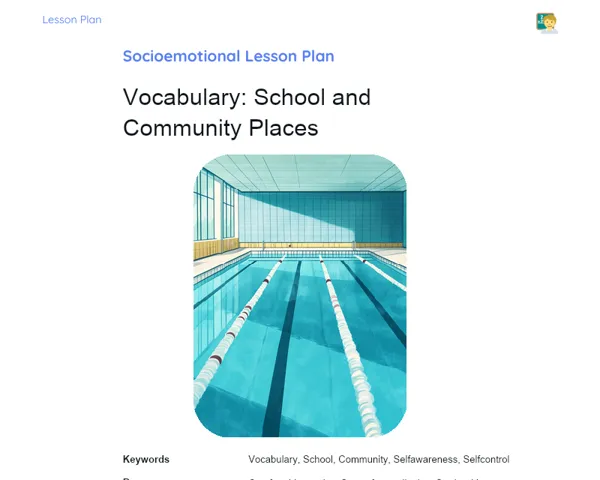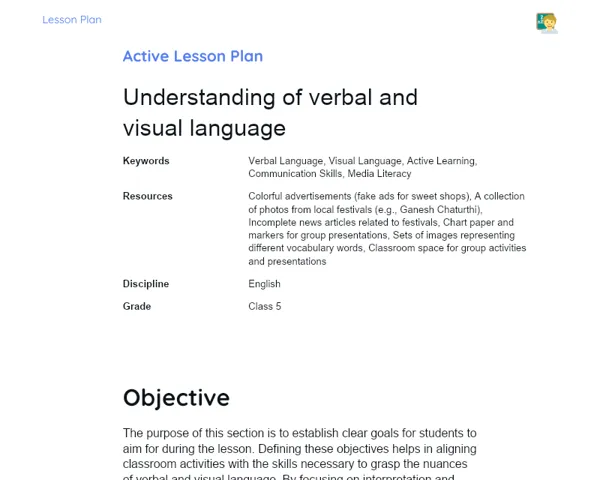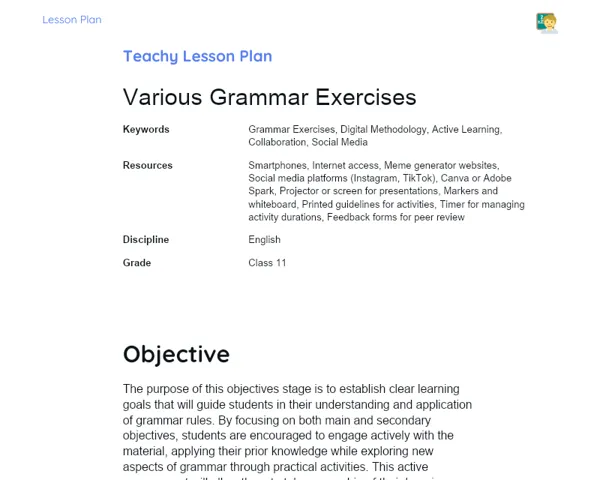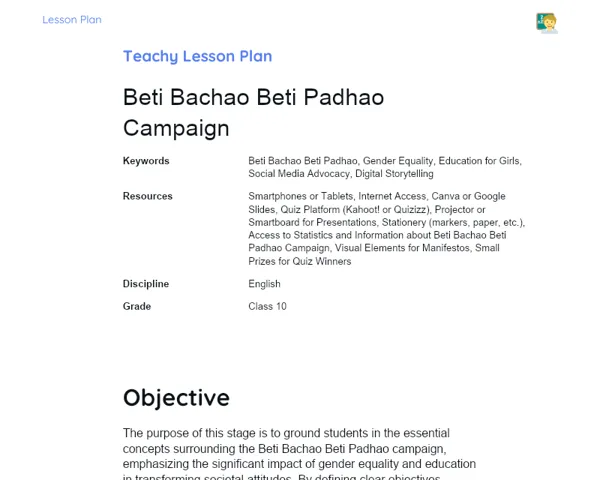Lesson Plan | Lesson Plan Tradisional | Object Pronouns
| Keywords | Object Pronouns, English, 4th Grade, Elementary Education, Practical Examples, Guided Practice, Fluid Communication, Subject Pronouns, Songs and Movies, Exercises |
| Resources | Whiteboard and markers, Notebooks and pencils for taking notes, Exercise sheets, Projector or screen for displaying examples, Audio or video clips of songs/movies featuring object pronouns |
Objectives
Duration: (10 - 15 minutes)
The goal of this stage is to ensure students grasp the concept of object pronouns and can apply them accurately in sentences. This foundation will help them recognize and use these pronouns effectively in both their written and spoken communication.
Objectives Utama:
1. Introduce the concept of object pronouns in English.
2. Show how object pronouns function in sentences.
3. Present clear and relatable examples of object pronouns in use.
Introduction
Duration: (10 - 15 minutes)
The purpose of this stage is to enable students to understand object pronouns and apply them correctly in sentences, laying the groundwork for using these pronouns adequately in both writing and speaking.
Did you know?
Did you know that object pronouns come up frequently in our day-to-day conversations, songs, and films? For instance, in the popular song 'Let It Go' from the movie Frozen, the pronoun 'it' acts as an object pronoun that stands in for something referred to earlier. This makes our language more engaging and much less repetitive.
Contextualization
To kick off the lesson on object pronouns in English, start by explaining to students that, similar to Hindi or other languages, object pronouns are used to take the place of nouns that receive the action in a sentence. Instead of repeating a name or object multiple times, we can use pronouns like 'him', 'her', 'it', 'us', and 'them' to keep our sentences fluid and natural. Emphasize the importance of these pronouns in forming clear sentences and effective everyday communication.
Concepts
Duration: (40 - 50 minutes)
The aim of this stage is to deepen students' understanding of object pronouns through in-depth explanations, practical examples, and exercises. This ensures that students can identify and use object pronouns appropriately in various contexts, leading to clearer and more effective communication.
Relevant Topics
1. Definition of Object Pronouns: Explain that these are pronouns that replace nouns receiving the action of the verb. Provide clear examples such as 'him', 'her', 'it', 'us', and 'them'.
2. Usage in Sentences: Show how object pronouns are integrated into various types of sentences. For example, 'I saw him at the park.'
3. Difference Between Subject and Object Pronouns: Clarify the distinction between subject pronouns (I, you, he, she, it, we, they) and object pronouns (me, you, him, her, it, us, them). Provide comparison examples like 'She loves him.' vs. 'He loves her.'.
4. Everyday Examples: Share instances of object pronouns used in songs, films, and common conversations. Relate them to students’ real-life contexts to enhance relevance in learning.
5. Guided Practice: Conduct exercises where students practice replacing nouns with object pronouns in sentences provided.
To Reinforce Learning
1. Replace the nouns with object pronouns in this sentence: 'Maria called John and Anna.'
2. What is the difference between 'him' and 'he'? Use each in a sentence.
3. Complete this sentence with the correct object pronoun: 'The teacher gave the books to ___. (us/we)'
Feedback
Duration: (20 - 25 minutes)
This stage aims to consolidate the knowledge gained during the lesson, ensuring students fully comprehend how to use object pronouns in sentences. Through engaging discussions, students can clarify doubts, apply their learning in new contexts, and understand the importance of object pronouns in daily conversations.
Diskusi Concepts
1. Discuss the noun replacement in the sentence: 'Maria called John and Anna.' The correct answer is: 'Maria called them.' Here, 'John and Anna' are replaced by 'them' as they are the objects in the action of 'Maria called'. 2. Differentiate between 'him' and 'he': 'Him' is used as an object pronoun receiving the action of the verb while 'he' is a subject pronoun performing the action. Examples include 'I saw him at the park.' and 'He is going to the park.' 3. Complete the sentence with the correct object pronoun: 'The teacher gave the books to ___. (us/we)'. The right answer is 'us'. The complete sentence would be: 'The teacher gave the books to us.' Here, 'us' is the object pronoun receiving the books from the teacher.
Engaging Students
1. Encourage students to identify object pronouns in sentences they know or songs they like. Invite them to share examples. 2. Prompt students to create sentences of their own using object pronouns to reinforce what they’ve learned. 3. Discuss why using object pronouns instead of repeating nouns is beneficial. How does this make communication smoother? 4. Lead a brief discussion on the use of object pronouns across different types of media, like movies and books, and their importance for fluent language use.
Conclusion
Duration: (10 - 15 minutes)
The aim of this stage is to review and solidify the knowledge gained throughout the lesson, ensuring students fully grasp the usage of object pronouns in sentences. This offers an opportunity to recap key points, address questions, and emphasize the topic's relevance in daily communication.
Summary
['Object pronouns are used to replace nouns that receive the action in a sentence.', "Examples of object pronouns include: 'him', 'her', 'it', 'us', 'them'.", "The distinction between subject pronouns ('I', 'you', 'he', 'she', 'it', 'we', 'they') and object pronouns ('me', 'you', 'him', 'her', 'it', 'us', 'them').", 'Using object pronouns helps in making communication more fluid and minimizing repetition.', 'Practical applications of object pronouns can be found in songs, movies, and everyday conversations.']
Connection
The lesson successfully linked the theory of object pronouns with practical application through clear examples and guided exercises. Students had the chance to identify and substitute nouns with object pronouns, applying theoretical knowledge in relatable contexts.
Theme Relevance
A sound understanding of object pronouns is crucial for effective and natural communication. They are widely used in conversations, texts, songs, and films, helping to eliminate repetition and make language more dynamic.



